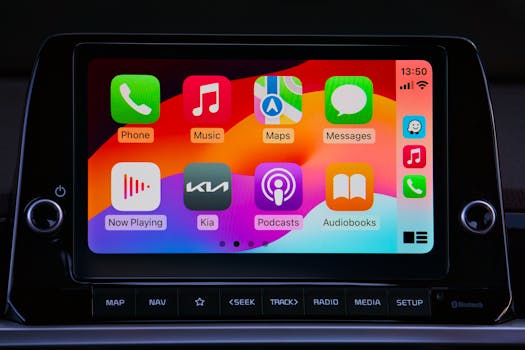
Great news for Android users! Android Auto is now compatible with a wider range of smartphones, making in-car connectivity more accessible than ever before. Upgrade your driving experience with seamless navigation, entertainment, and communication.
Android Auto Expands: More Phones Than Ever Supported!
Android Auto has become an indispensable tool for many drivers, seamlessly integrating smartphone functionality into the car's infotainment system. Now, Google is expanding its reach, making Android Auto compatible with a broader range of devices. This means more users can enjoy hands-free navigation, music streaming, and communication while on the road. It's time to upgrade your driving experience!
What's New with Android Auto Support?
The key improvement is the expanded compatibility with a wider array of Android phones. Previously, certain older models or those with specific hardware configurations might have struggled to connect or run Android Auto smoothly. This update addresses those limitations, allowing more users to leverage the benefits of Android Auto.
Specific Phone Models Supported
While Google doesn't publish a comprehensive list of every supported phone, the general trend is towards greater inclusivity. Phones running Android 8.0 (Oreo) and above are generally compatible. However, performance can vary based on the phone's processing power and RAM. If you're unsure, the best way to check is to simply connect your phone to your car and see if Android Auto launches.
- Tip: Keep your phone's operating system and Android Auto app updated. These updates often include compatibility improvements and bug fixes.
Benefits of Expanded Compatibility
- Wider User Base: More people can now access the convenience and safety features of Android Auto.
- Reduced Fragmentation: Less frustration for users who previously couldn't use the service.
- Increased Adoption: As more phones are supported, the overall adoption rate of Android Auto will likely increase.
Setting Up Android Auto: A Quick Guide
Getting started with Android Auto is generally straightforward. Here's a step-by-step guide:
1. Check Compatibility: Ensure your car's infotainment system supports Android Auto. Most modern cars do, but it's always best to verify.
2. Download the App: If your phone doesn't have it pre-installed, download the Android Auto app from the Google Play Store.
3. Connect Your Phone: Use a USB cable to connect your phone to your car's USB port. In some newer cars, wireless Android Auto is available. Make sure Bluetooth is enabled.
4. Follow On-Screen Instructions: Your car's infotainment system will guide you through the setup process. You may need to grant permissions to access certain features.
5. Enjoy! Once set up, you can access navigation, music, and other apps directly from your car's display.
Troubleshooting Common Issues
- Connection Problems: Try a different USB cable. Ensure the cable is data-transfer capable, not just for charging.
- App Crashing: Clear the Android Auto app's cache and data in your phone's settings.
- Audio Issues: Check your car's audio settings to ensure the correct input source is selected.
- Wireless Connection Issues: Make sure both your phone and car support wireless Android Auto and that Bluetooth is enabled.
Why Android Auto Matters
Android Auto isn't just about convenience; it's about safety. By integrating your phone's functionality into your car's display, it minimizes distractions and allows you to keep your eyes on the road. Here are some key benefits:
- Hands-Free Navigation: Use Google Maps or Waze for turn-by-turn directions without having to look at your phone.
- Music Streaming: Access your favorite music services like Spotify, YouTube Music, and Pandora.
- Voice Control: Use Google Assistant to make calls, send messages, and control apps with your voice.
- Reduced Distractions: By minimizing the need to interact with your phone directly, Android Auto helps you stay focused on driving.
The Future of Android Auto
Google is constantly working to improve Android Auto, adding new features and expanding its capabilities. Expect to see even more advanced integration with car systems, enhanced voice control, and improved support for third-party apps in the future. Wireless connectivity will also become more prevalent, further simplifying the user experience.
Conclusion
The expanded compatibility of Android Auto is a welcome development for Android users. By supporting a wider range of phones, Google is making in-car connectivity more accessible and convenient than ever before. So, connect your phone and experience the benefits of a smarter, safer driving experience. Update your apps, grab a compatible cable, and hit the road with Android Auto!
